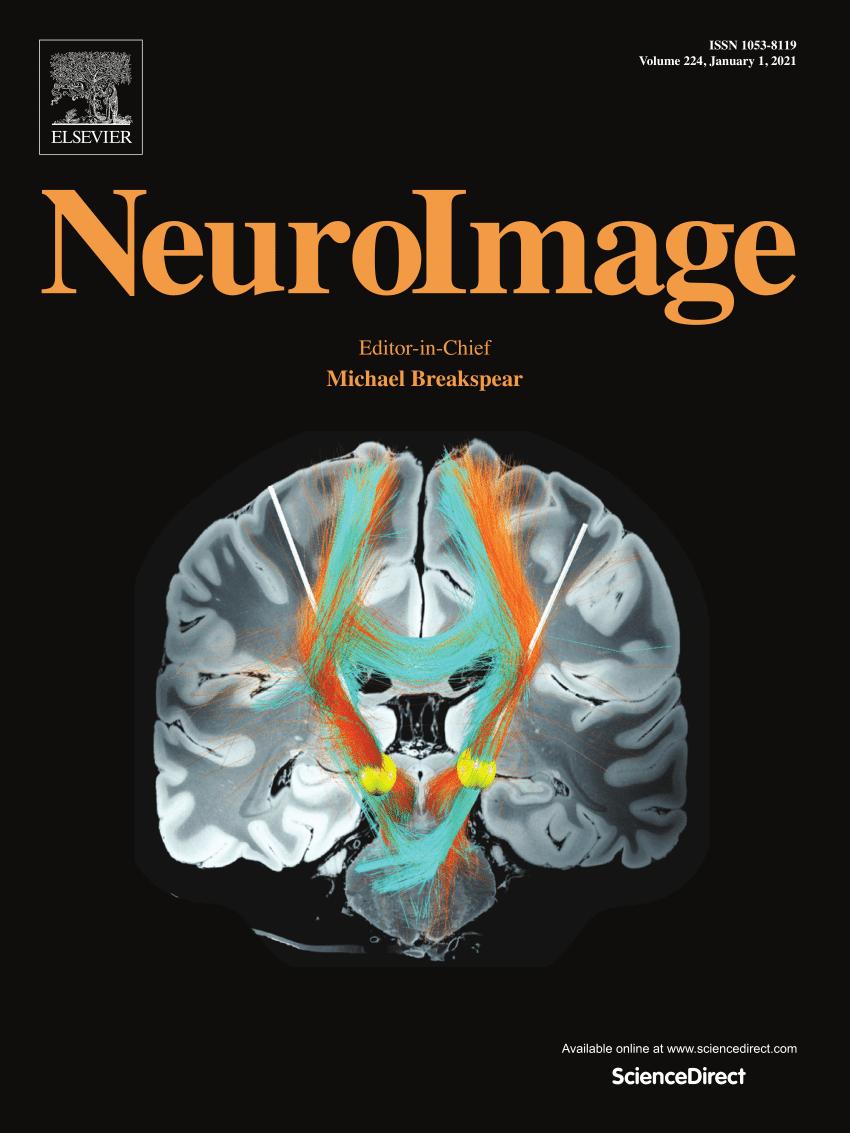女性纤维肌痛患者工作记忆障碍与灰质体积变化的解耦:抑郁的调节作用
IF 4.5
2区 医学
Q1 NEUROIMAGING
引用次数: 0
摘要
纤维肌痛患者的特征是伴随着持续的慢性疼痛,认知障碍,主要是在工作记忆能力方面。有人认为,额顶叶神经回路的异常可能是导致这种功能障碍的原因。然而,有限的神经影像学研究和混合或不一致的结果导致了不确定的证据。在考虑疼痛和情感性症状影响的情况下,采用基于体素的形态测量法(VBM)探讨纤维肌痛患者工作记忆功能障碍与脑灰质体积之间的神经联系。研究对象为30例女性纤维肌痛患者和27例健康女性。工作记忆功能采用韦氏成人智力量表III (WAIS-III)和韦氏记忆量表III (WMS-III)进行评估。还分析了VBM数据(全球和区域灰质体积)。不出所料,纤维肌痛患者在算术、字母数字排序和工作记忆指数上的得分低于健康个体。尽管如此,我们发现两组之间的灰质体积没有差异。适度分析强调了考虑纤维肌痛的情感性症状(如抑郁症)的重要性,以表征脑岛和前额叶皮层(眼窝前额叶皮层和腹外侧前额叶皮层)局部灰质体积与工作记忆功能之间的关系。这些结果表明,中度至重度抑郁症状似乎是理解灰质体积和工作记忆之间关联出现的关键,为这一复杂关系提供了有价值的新见解。需要基于多模态成像方法的进一步研究来完善当前的发现,并探索纤维肌痛认知障碍的神经回路。本文章由计算机程序翻译,如有差异,请以英文原文为准。
Decoupling working memory impairment from grey matter volume changes in female patients with fibromyalgia: Moderating effect of depression
Patients with fibromyalgia are characterised by having, along with persistent chronic pain, cognitive impairments, mainly in working memory capacity. It has been suggested that abnormalities in fronto-parietal neural circuits might account for this dysfunction. However, limited body of neuroimaging research and mixed or inconsistent results have led to inconclusive evidence. Our investigation aimed to explore the neural links between working memory dysfunction and brain grey matter volume in fibromyalgia using voxel-based morphometry (VBM), considering the influence of pain and affective symptoms. Thirty female patients with fibromyalgia and twenty-seven healthy female individuals participated in the present investigation. Working memory functioning was assessed using the Wechsler Adult Intelligence Scale III (WAIS-III) and the Wechsler Memory Scale III (WMS-III). VBM data (global and regional grey matter volume) were also analysed. As expected, fibromyalgia patients scored lower on Arithmetic, Letter-Number Sequencing and Working Memory Index than healthy individuals. Nonetheless, we found no differences in grey matter volume between groups. Moderation analyses highlighted the importance of considering affective symptoms of fibromyalgia, such as depression, to characterize associations between local grey matter volumes in the insula and prefrontal cortices (orbitofrontal and ventrolateral prefrontal cortex) with working memory functioning. These results suggest that moderate to severe symptoms of depression appear to be critical for understanding the emergence of associations between grey matter volume and working memory, offering valuable new insights into this complex relationship. Further research based on multimodal imaging approaches is needed to refine current findings and explore neural circuits underlying cognitive impairment in fibromyalgia.
求助全文
通过发布文献求助,成功后即可免费获取论文全文。
去求助
来源期刊

NeuroImage
医学-核医学
CiteScore
11.30
自引率
10.50%
发文量
809
审稿时长
63 days
期刊介绍:
NeuroImage, a Journal of Brain Function provides a vehicle for communicating important advances in acquiring, analyzing, and modelling neuroimaging data and in applying these techniques to the study of structure-function and brain-behavior relationships. Though the emphasis is on the macroscopic level of human brain organization, meso-and microscopic neuroimaging across all species will be considered if informative for understanding the aforementioned relationships.
 求助内容:
求助内容: 应助结果提醒方式:
应助结果提醒方式:


